Without doubt, certain plants are strongly tied to specific garden styles and are limited by climate and available square footage. But the last thing I'm looking for in landscape design is another rule to follow. Grasses are exceedingly flexible — which I appreciate — and the especially bold yet petite blue fescue harmonizes with nearly every garden style and planting palette.
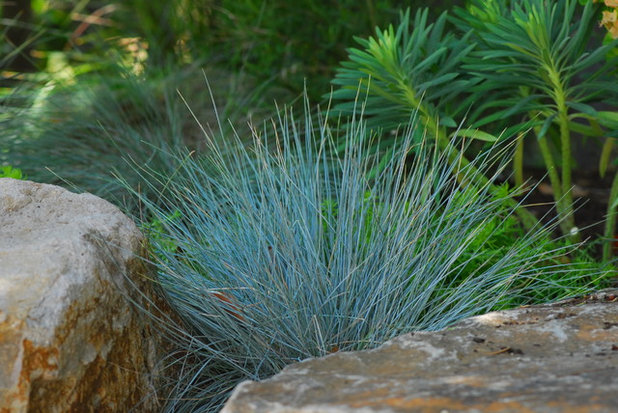
Astrid Gaiser Garden Design, LLC
Botanical name: Festuca glauca
Common names: Common blue fescue; blue fescue
USDA zones: 4 to 8 (find your zone)
Water requirement: Drought tolerant; looks best with supplemental water
Light requirement: Best color in full sun; partial shade in the hottest climates
Mature size: Up to 14 inches tall (with inflorescence) and 10 inches wide
Benefits and tolerances: Deer resistant; tolerant of drought, coastal conditions and poor soils
Seasonal interest: Nearly evergreen; insignificant flowers in spring and summer
When to plant: Divide clumps in spring and fall; it can also be planted from seed.
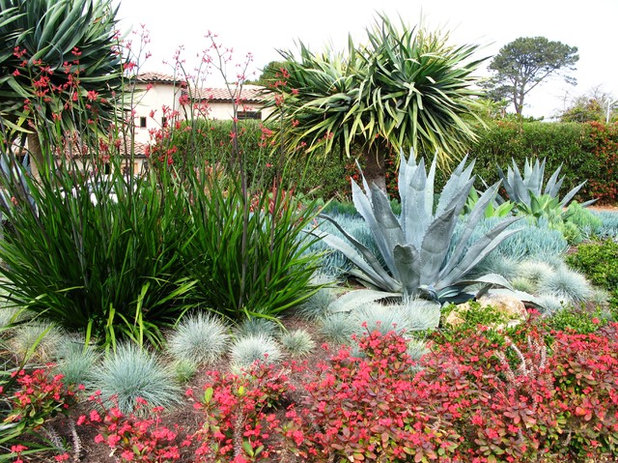
debora carl landscape design
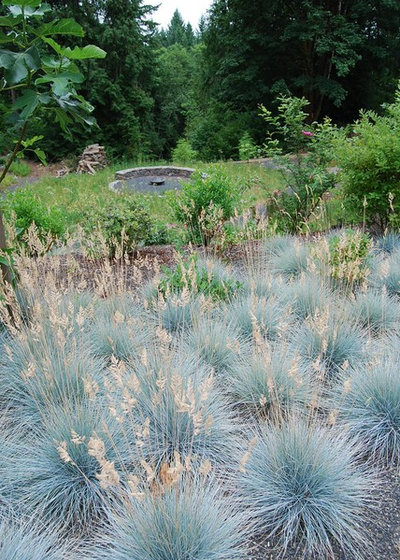
Samuel H. Williamson Associates
Distinguishing traits. Blue fescue is relatively compact, forming a dense, rounded mound of blue-gray foliage. I like to think of blue fescue as modular — it looks great as a single specimen or massed in a field.
Blue fescue blooms, though somewhat insignificantly, in summer; golden inflorescences add height and a softer texture to the otherwise stiffer structure. When other grasses fade to a soft golden hue in fall, blue fescue keeps its soft blue color.
Popular cultivars include
'Elijah Blue', 'Blausilber' and
'Siskiyou Blue'.
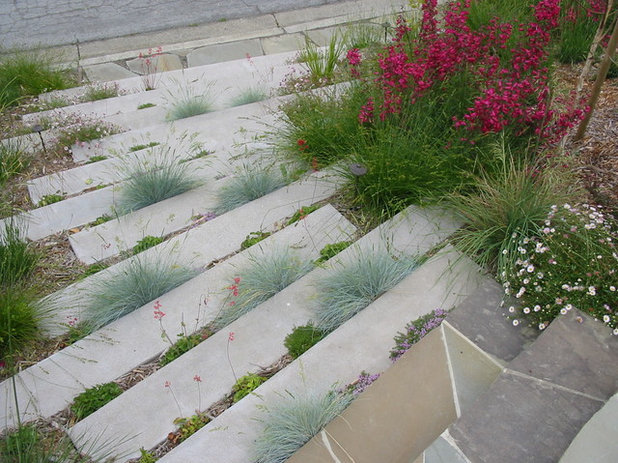
Huettl Landscape Architecture
How to use it. - Mass it as a ground cover
- Edge a planting bed or path
- Accent a green wall or living roof
- Mix it in a container garden
- Dot it into a rock garden
How
can't you use blue fescue? Its growing tolerances mean it thrives in many different conditions, but its adaptable appearance suits almost any garden style: modern minimalist gardens, contemporary coastal gardens and even lush, natural-style gardens.
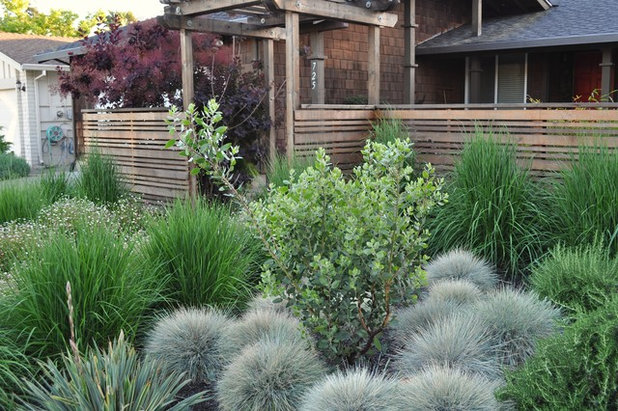
Huettl Landscape Architecture
Note: If you mass blue fescue, be sure to place the plants close together (10 inches or so); it is not a clumping grass and will not fill in.
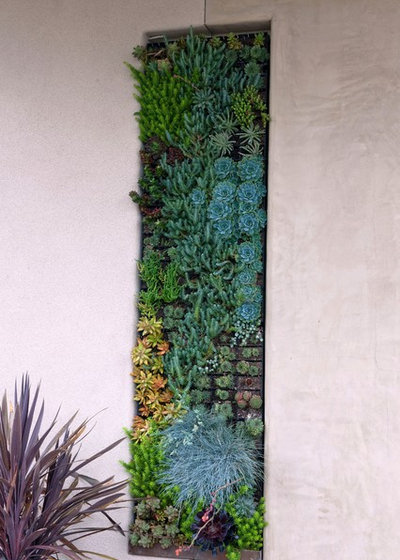
debora carl landscape design
Planting notes. Blue fescue is low maintenance and relatively worry free but short lived — so it’s helpful that maintenance and propagation go hand in hand.
To keep the grass looking its best, divide it every few years to revitalize it. The center of the grass has a tendency to die out, so if you notice a browning center, divide it. To propagate, dig it up and divide it in spring or fall.
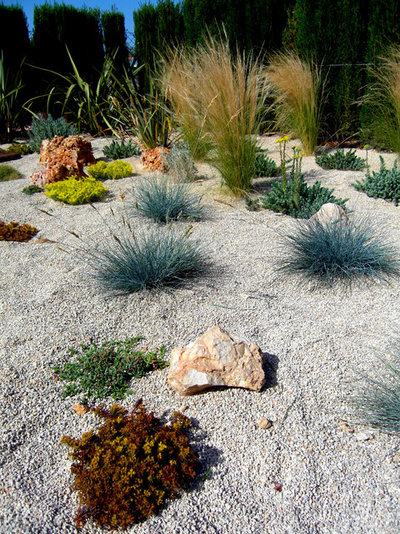
Simbiosi
Blue fescue will produce its bluest color when grown in full sun, though it can survive in some shade, especially in hotter climates. It looks best when watered but can tolerate periods of drought as well as frost.
If you see grass browning after winter, cut back (to about 4 inches) in spring to promote healthy new growth. It’s a cool-season grass, doing most of its growing in spring and fall; you may notice dormancy in winter and summer. Grow it in well-drained soil.





